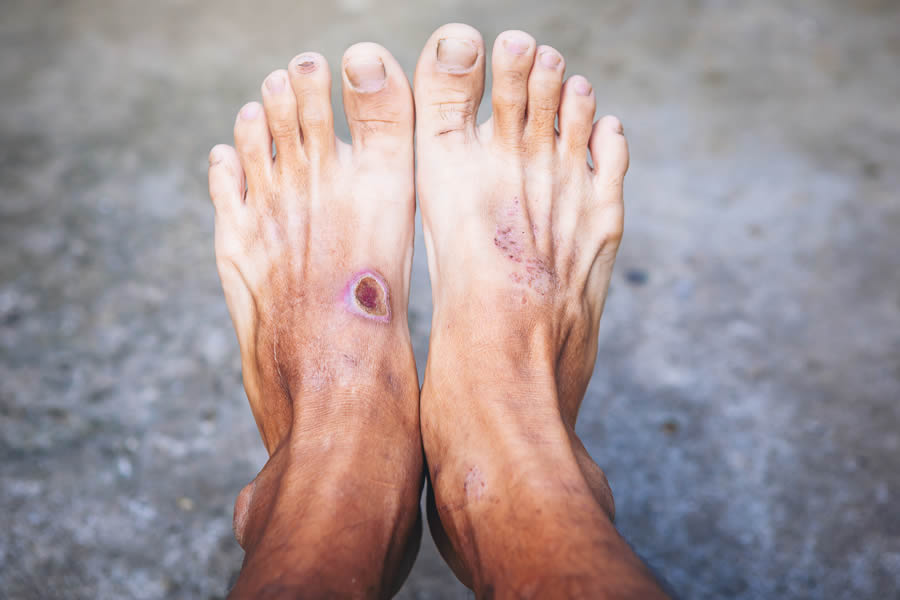When it comes to managing diabetes, one often-overlooked…
Read MoreWhen it comes to managing diabetes, one often-overlooked yet critical concern is the diabetic foot ulcer – a condition that affects approximately 15 percent of individuals with diabetes. This open sore or wound frequently found on the bottom of the foot poses significant health risks, with six percent of those affected requiring hospitalization due to infection or related complications.
In this article brought to you by Southwest Central Wound Care, we will explore the insidious nature of diabetic foot ulcers and shed light on early warning signs. If you notice diabetic foot ulcers, then consider calling Southwest Central Wound Care to have a team of healthcare professionals come by. We are proud to offer mobile wound care services.

A diabetic foot ulcer is more than just a sore; it is a consequence of the complex interplay of factors associated with diabetes. Prolonged periods of elevated blood sugar levels can lead to nerve damage (neuropathy) and impaired blood circulation, primarily in the lower extremities. The combination of reduced sensation and compromised blood flow creates a perfect storm for the development of ulcers, often on the weight-bearing areas of the foot.
In the initial stages, diabetic foot ulcers may manifest as persistent redness or swelling around a specific area on the foot. This could be an early indication of tissue damage or inflammation. Watch out for any changes in skin color or texture. The skin around the ulcer site may become shiny, tight, or discolored. These alterations can be indicative of compromised blood flow and tissue health.
Diabetic neuropathy can dull sensations, but unexplained pain or discomfort in the foot, especially during activities, may signal the presence of an underlying issue. Localized warmth around a specific area of the foot can be a sign of infection. Diabetes-related immune system impairment makes individuals more susceptible to infections, heightening the risk of complications.
Any drainage, pus, or foul odor from a wound or sore demands immediate attention. These signs often signify infection, which can rapidly escalate if not addressed promptly.
Individuals with diabetic foot ulcers should seek wound care promptly upon detecting any signs or symptoms of trouble. Early intervention is critical to prevent complications and promote optimal healing. Here are key indicators that should prompt individuals with diabetic ulcers to seek wound care:
When it comes to managing diabetes, one often-overlooked…
Read MoreNot everyone knows first aid, and even those…
Read MoreAttending to the needs of bedridden patients presents…
Read MoreThe journey to recovery after surgery is a…
Read MoreIndividuals with diabetic foot ulcers need to recognize that self-care alone may not be sufficient, and professional expertise is often necessary for effective wound management. You don’t have to head to a clinic. Southwest Central Wound Care is proud to offer mobile wound care services. Call Southwest Central Wound Care to request a dispatch to your home or location today.